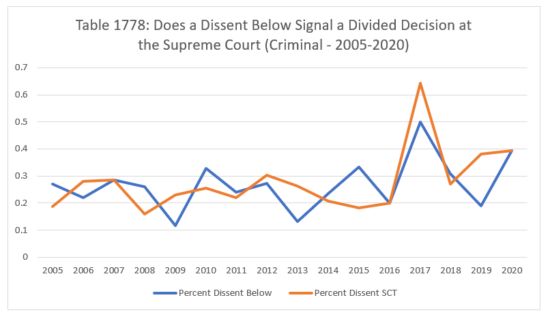In criminal cases between 2005 and 2020, dissents at the Appellate Court were more common than divided decisions in criminal cases in seven of sixteen years: 2005, 2008, 2010-2011, 2014-2015, 2018. In 2007, 2016 and 2020, the percentages were identical. In 2006, 28% of criminal cases had a dissent at the Supreme Court to 22% at the Appellate Court. In 2009, 23.08% had a dissent at the Supreme Court to 11.54% at the Appellate Court. In 2012, 30.3% had a dissent at the Supreme Court while 27.27% had a dissent below. The following year, the margin increased - 26.32% at the Supreme Court, 13.16% at the Appellate Court. In 2017, 64.29% of criminal cases had a dissenter at the Supreme Court. Half had a dissenter at the Appellate Court. In 2019, 38.1% had a dissenter at the Supreme Court, while 19.05% had a dissent at the Appellate Court.

Join us back here next week as we turn our attention to a related issue.
Image courtesy of Flickr by Darsham Simha (no changes).
The content of this article is intended to provide a general guide to the subject matter. Specialist advice should be sought about your specific circumstances.
